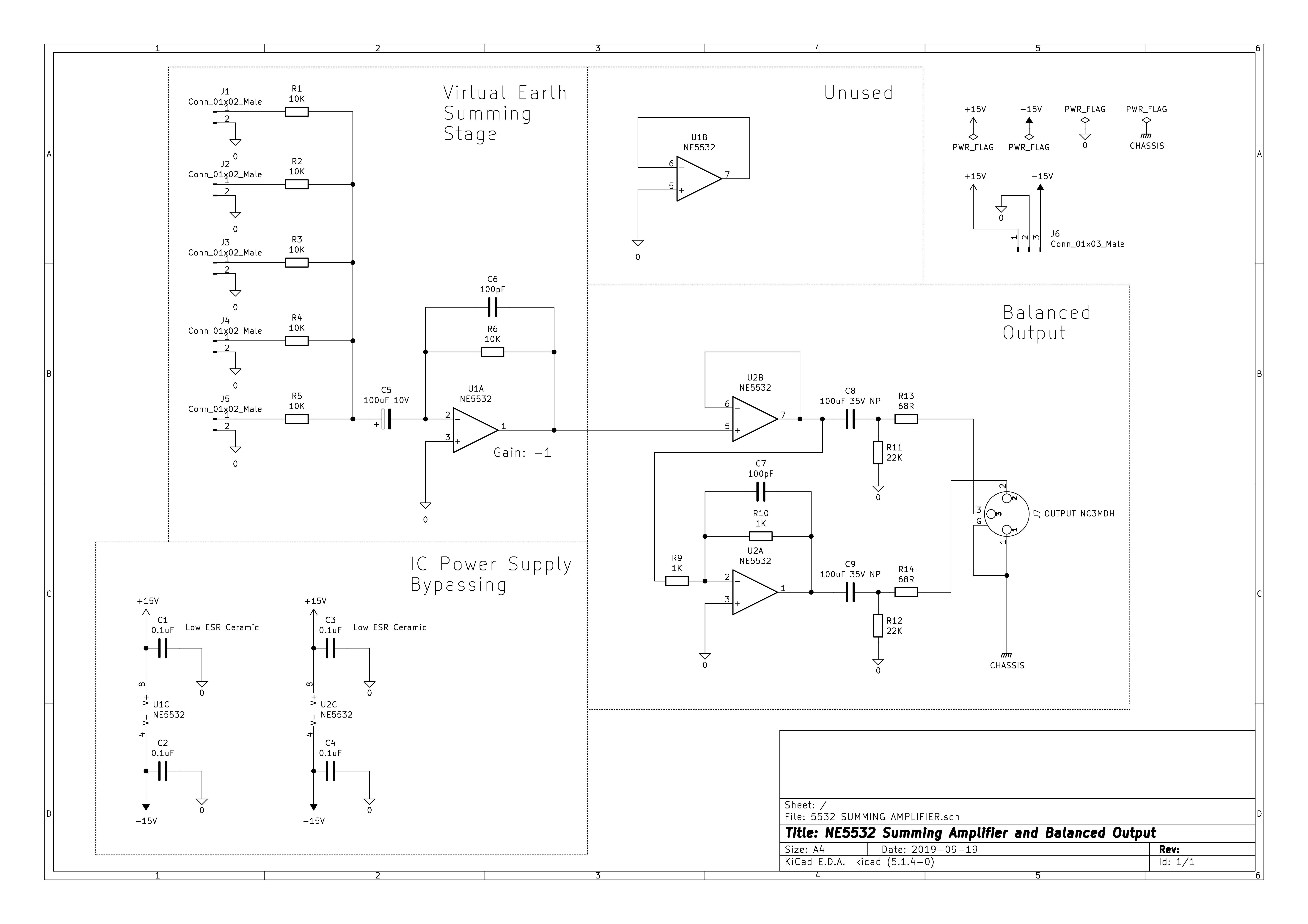Looks good. But for posterity here is my comment from before that got lost:
Regarding the mix resistors, the circuit is actually complicated enough that I would model it in LTSpice to see what the currents are, gain structure, noise impact, etc. In particular, unlike the unity signal gain of the circuit, the noise gain is greater and increases with more mix resistors. Note that the load and noise depends on the number of mix resistors. And since 5 is not that many, my guess at this point is that you could probably go down to as low as 6.8K or maybe even 4.7K (five 4.7K in parallel is a load of 940 ohms which a good op amp should be able to handle no problem).
Note that the size of C5 might not matter as much as you think. The resistance seen by that cap is the parallel resistance of all of the mix resistors which is 4.4K. So with a 100uF cap, that's a cutoff of 0.36 Hz. That might seem unnecessarily low but the rationale is that, because it's an electrolytic, it will cause distortion at the corner frequency where it has some AC resistance. However, in this particular virtual earth circuit, the voltage at that point is very low and therefore there will be no significant voltage across the cap and therefore there will be very little distortion. And, if you use a high quality "audio grade" capacitor (which is just a super low ESR cap), distortion will be even lower.
Or, maybe you don't even need the cap at all. The reason it's there is because the offset current of the summing amp may cause popping noises if there are switches directly on the bus. But you don't have switches directly on the bus. Also, you could use a better op amp that has even better performance than the 5532 and lower offset. And, since you got rid of the inverting buffer, you could use a single op amp. There are lots of fancy single op amps that have offsets of 0.1mV or so. I don't keep up on such things but it would not be hard to find an amp that would allow you to remove the cap entirely and still probably do switching directly on the bus.




